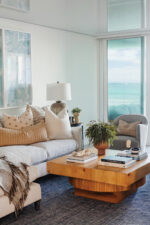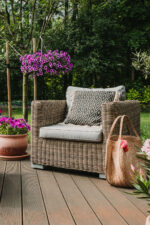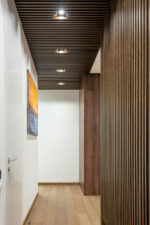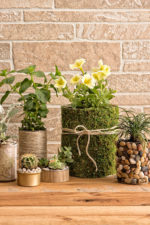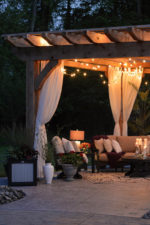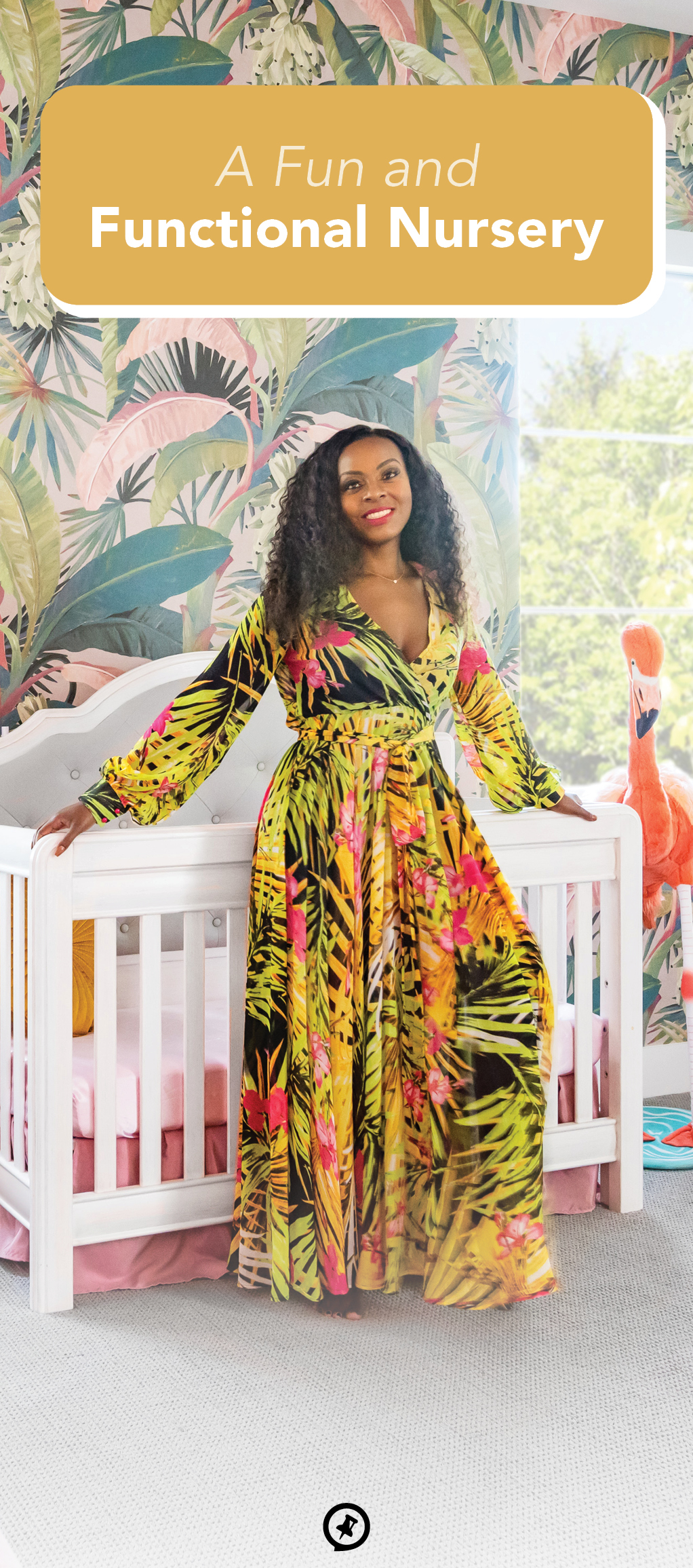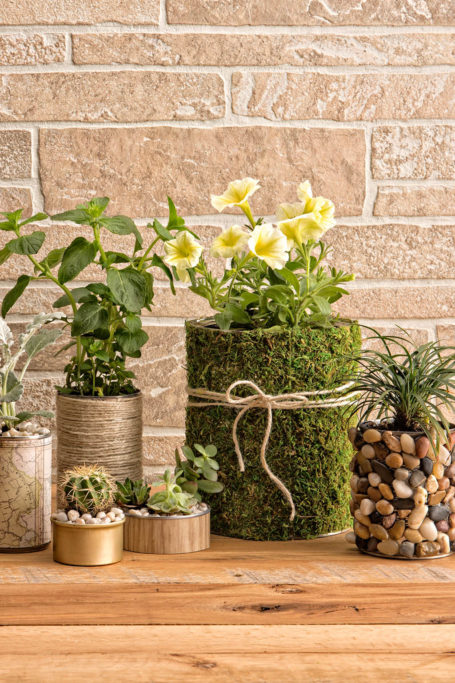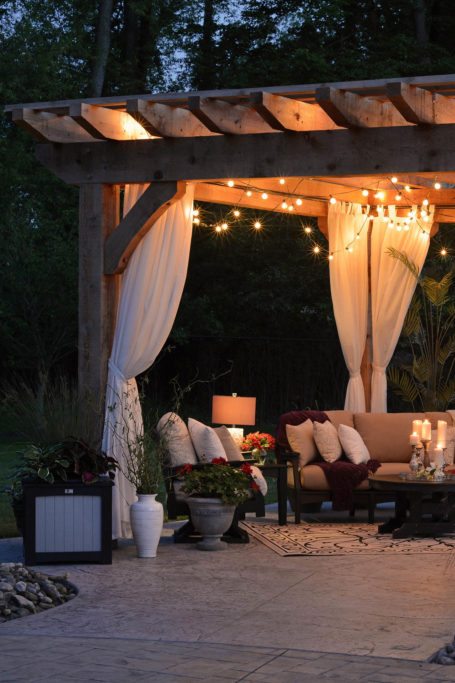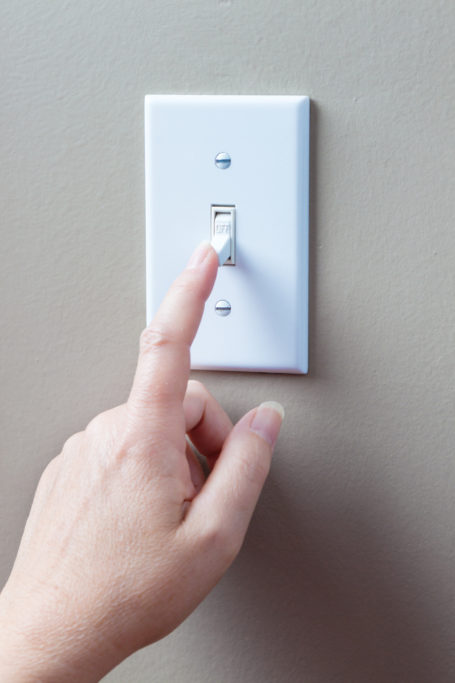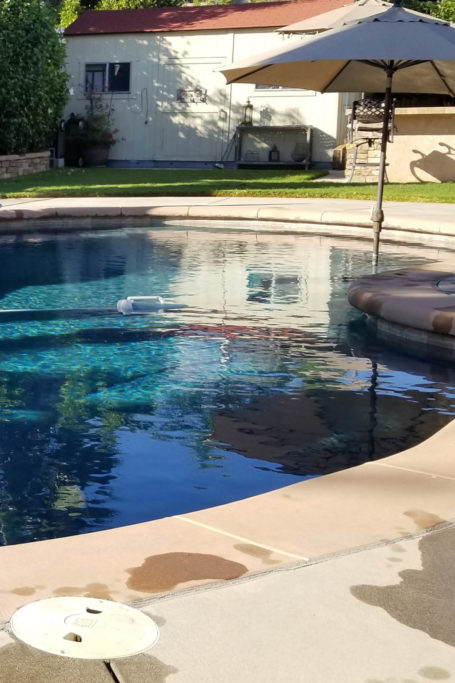A Fun and Functional Nursery
interview with: CHALON CLARK
photography by: AARON DOUGHERTY
Accomplished lawyer and interior designer Chalon Clark shares the meaningful inspiration behind her daughter’s vibrant and playful nursery design.
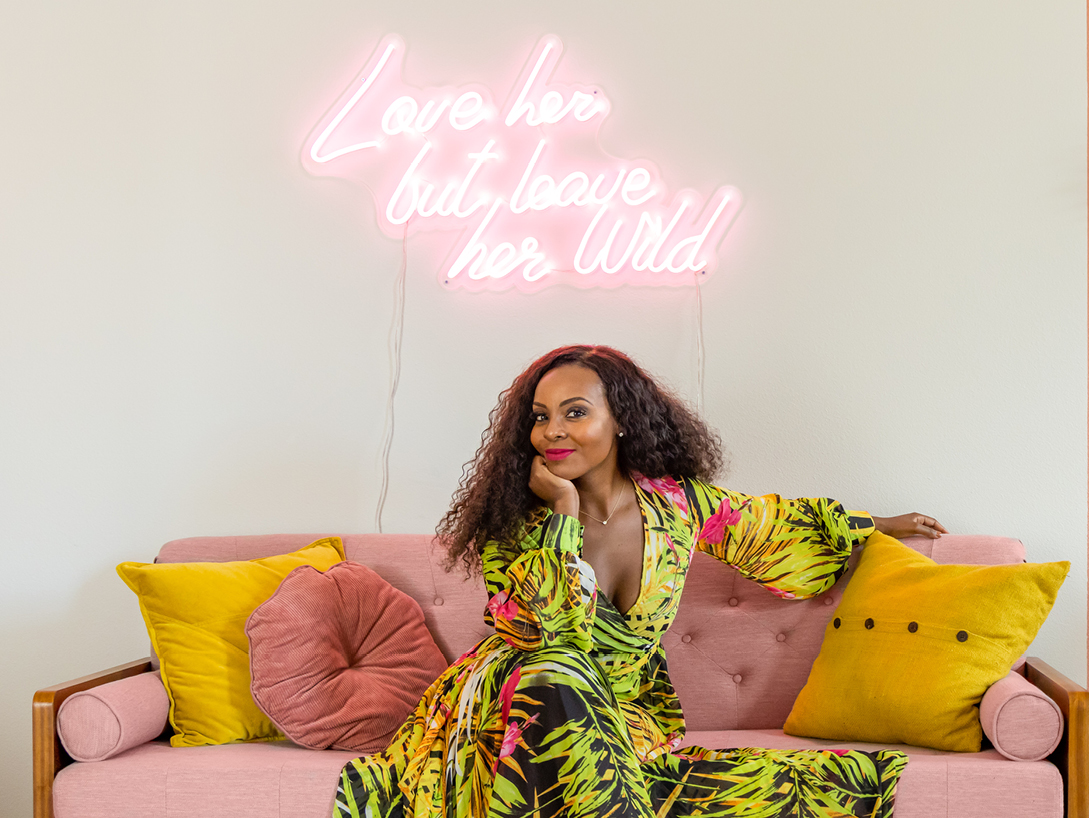
What influenced your decision to pursue interior design?
During the pandemic, I started to think about all my “what-ifs.” I was also pregnant with my third child, so I really wasn’t going anywhere. One of the things on my bucket list was to write a book. The second thing on my list was design. One day, my husband—who is an entrepreneur and is always up to something—came home and told me he bought a house he wanted us to flip. He encouraged me to design it, pick out all the finishes and furnishings, and then stage it to sell. On top of that, he owns Jamaican restaurants and never had money to pay someone to design them, so I had done that three times. Finally, I looked at my portfolio and thought, Maybe I need to quit saying I’m not a designer. Maybe I am.
How did you begin to take on clients?
I opened an Instagram account and posted a picture of a design I had done seven years ago. My husband encouraged me to post it on Facebook because that’s where my following was, but I didn’t want to do that—I was afraid my colleagues would see it and think I wasn’t serious about law. I did it anyway, and the response was very positive. My first client ended up being another female attorney! I officially created my business in early, and by August I was fully booked for 2022.
Are there any parallels between your law career and your design work?
For me, it’s all about service since they are both service industries. I have a lot of attention to detail as a lawyer, and that goes hand in hand with design. I’m very particular when it comes to communicating with my clients and often overcommunicate. As a lawyer, you must have a process, and the same goes for design.
You describe your style as “modern funk.” Can you elaborate on that?
I really like modern designs and prefer clean lines without a lot of curves. But I also like to infuse culture. I’m African American, my family comes from The Bahamas, and my husband’s family is from Jamaica. I think the one thing that’s missing in designs in magazines and on TV is that cultural component; that’s the “funk” part of modern funk. I will always bring in colors and textures that speak to the client’s culture and where they come from.
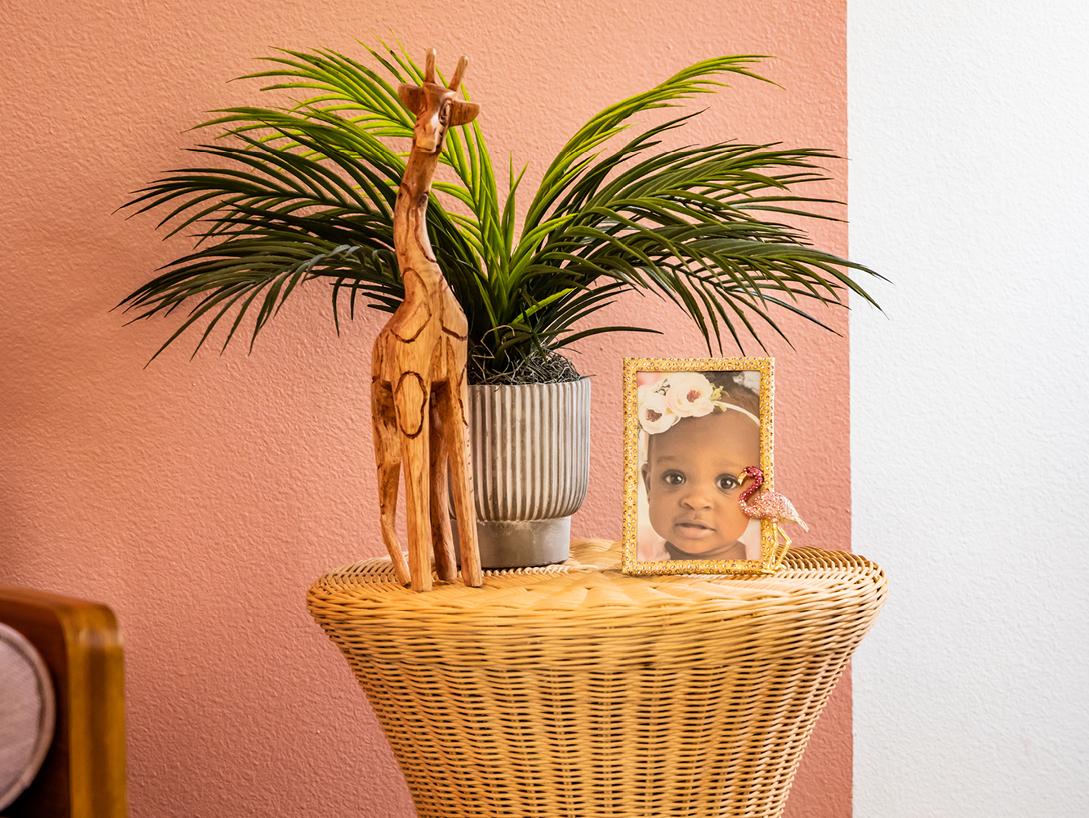
When it came time to design your daughter’s nursery, how did you make cultural elements a focal point?
I wanted it to reflect both sides of her family heritage: Jamaica and The Bahamas. The wall paper was the first thing I thought about, and I actually saw it while watching the show Renovation Island. It just reminded me of retro Caribbean vibes and going to my grandparents’ home. The wallpaper helped influence my decision to give the room a midcentury-modern-meets-the-Caribbean vibe. To bring in other touches of the Caribbean, I found an authentic rattan coffee table that could be used for storage.
You don’t often see neon signs in nurseries. Is there a special meaning behind hers?
It’s a quote from a poem by Atticus, “Love her but leave her wild,” and she is super wild. I wanted her to be independent and not overshadowed by her sisters, so I had the sign custom made. Neon is also a nod to the retro theme.
What other decorative elements did you add to the room to help it feel complete?
The china dolls on the shelf were keepsakes from when I was a child. Back in the ’80s, it was hard to find African American representation, so when my mom discovered those dolls at a state fair, she paid hundreds of dollars for them. She really wanted me to have them, and I took great care of them my entire childhood. Being able to put those dolls in her room was amazing.
I also had to add the conch shells, which is one of our favorite foods in The Bahamas, and, of course, lots of stuffed animals. The last element was the midcentury advertisements of Jamaica and The Bahamas that I framed and hung on the wall.
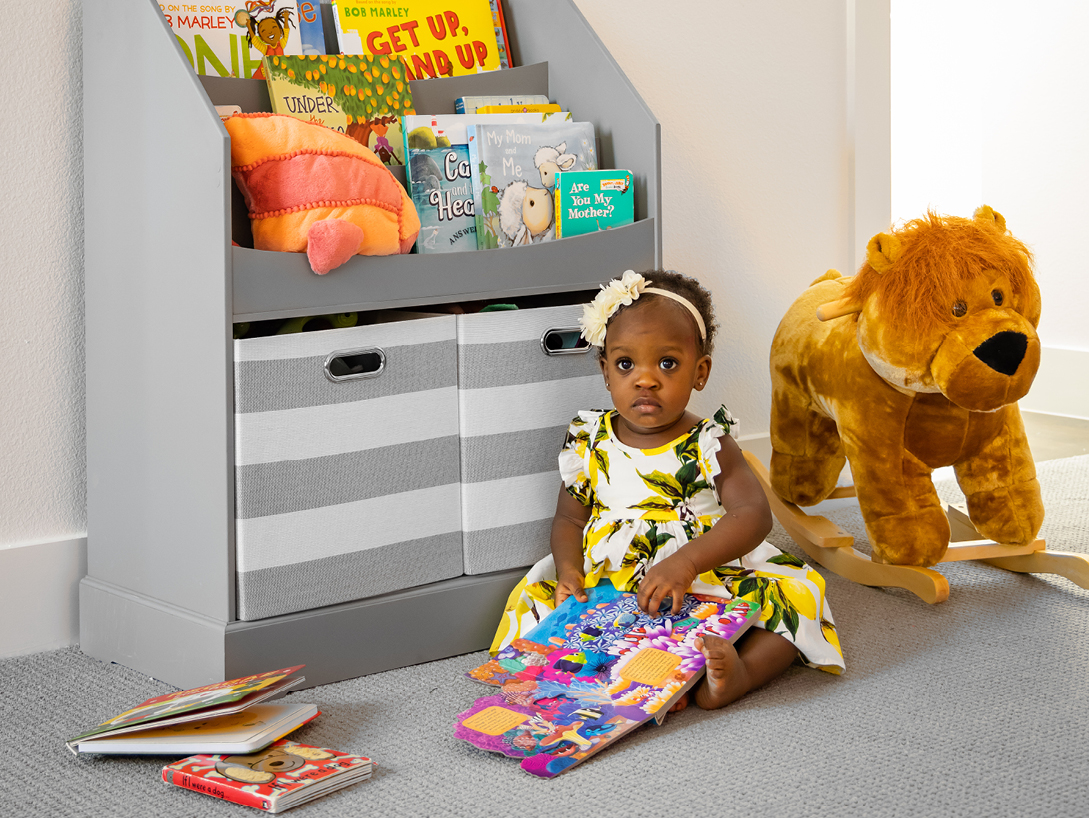
What advice do you have for people who want to create a nursery or children’s room that still feels sophisticated?
Even if you don’t want to hire a designer, there are so many great places, like Pottery Barn and CB2, that make modern-designed baby furniture. At the same time, I think people need to be willing to invest in their furniture. The pieces that look more sophisticated may cost a lot more, but they can often grow with your child.
I’d also encourage people to look for durable materials that are still beautiful. For example, the rattan coffee table likely wasn’t intended for a baby’s room, but it serves a dual purpose and is very resilient. Lastly, look to sophisticated color palettes. You don’t have to use colors like baby pink. Instead, go with a pastel pink or opt for cobalt blue over baby blue.
Is there a secret to creating a nursery that has adequate storage without making it look cluttered?
My daughter’s nursery is very large, so I wasn’t that concerned about space. However, I know that a lot of people are working with smaller rooms. There are a lot of furniture options with under-seat storage. Also, go ahead and purchase a regular-sized dresser. People will buy baby dressers, and there’s no need for that. You can put so many things in a full-sized dresser other than clothes, including diapers, wipes, and toys.
What is the biggest challenge of designing a child’s room versus other projects?
More so than other rooms, you’re looking for furniture that’s going to last somebody sixteen years, so it can be difficult to choose pieces that you think will still be in style. It needs to feel in vogue both today and in the future. For example, when our daughter gets older, we might decide to cover up the wallpaper a bit with curtains, and we could blend in different colors. For now, the easiest part is that she doesn’t have a say. [Laughs]
For more info, visit yourdesignredefined.com or follow Chalon on Instagram @yourdesignredefined



